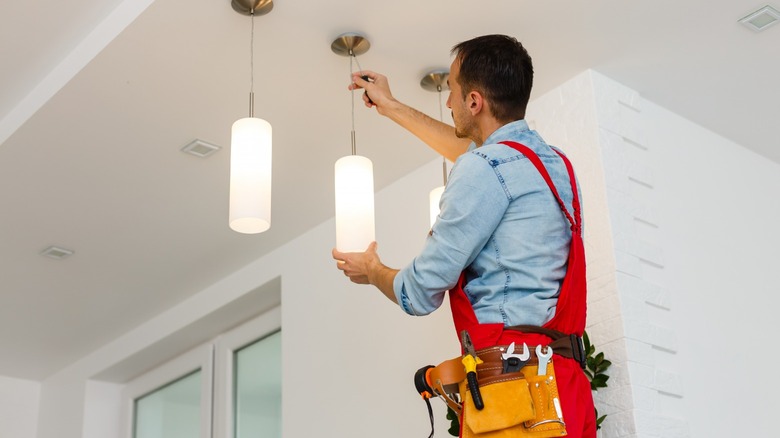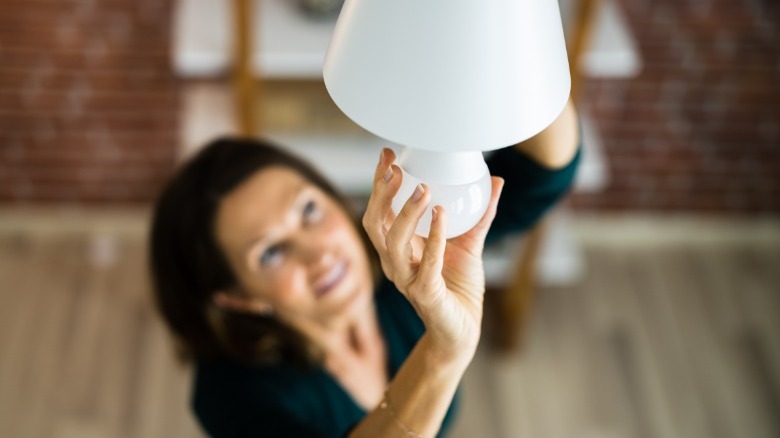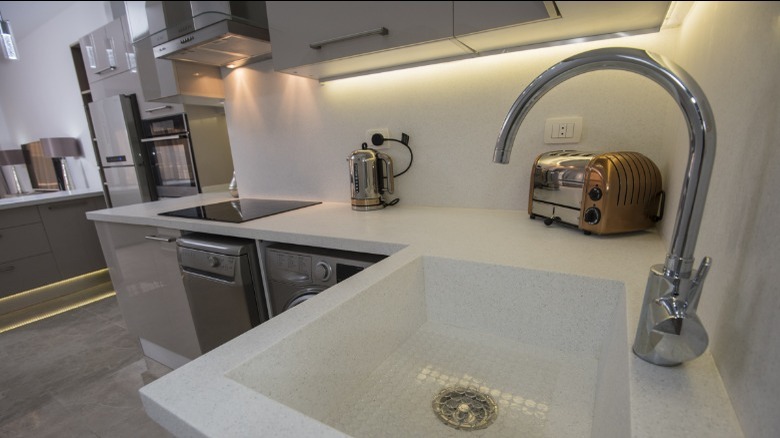Why Your Lights Are Buzzing And How To Fix It
Buzzing lights are a common complaint and can happen regardless of the types of lights and fixtures you have. Sometimes the issue is caused by a short, in which case you will need to call an electrician. Finding one for less than $50 an hour would be extremely lucky, not to mention slightly risky. Up to $150 an hour is in the normal range. Luckily, most of the time, buzzing lights are a simple problem you can troubleshoot and fix yourself.
Typically, the primary reason for buzzing has to do with the voltage in one way or another. Loose fixtures and excited filaments can vibrate, causing an annoying buzzing sound. Multiple devices using the same electrical line can cause lights to buzz. Both incandescent and fluorescent lights have notorious issues with humming and buzzing, while LED bulbs typically have fewer problems with buzzing. Since different types of lights have different causes of buzzing and fixes, we will go over some of them in this post.
LEDs and incandescent bulbs
With LED lights, there are no moving parts to cause vibration, but there are two main problems that can cause them to buzz. The first reason is electromagnetic interference from other devices being used in close proximity, in which case you can deal with the noise or move the item out of range. But the more common cause is the dimmer switch. The problem is, when most of us switched over to LEDs, we didn't always realize we needed to switch the dimmers, as well. There are three main types generally compatible: CL, LED+, or ELV dimmer switches. If you're unsure which to use, check the manufacturer for a published list.
If you're old-fashioned and still have incandescent bulbs around the house, buzzing lights are likely caused by vibrating filaments. However, these bulbs can also have incompatible dimmer switches. Since LEDs are superior in energy efficiency and last forever in comparison, the best solution here is to replace them. Just don't forget to update the dimmer switches.
Fluorescent lights
Fluorescent lights, including those spiral-shaped bulbs reminiscent of corkscrews, are notorious for an inherent buzzing sound. But when the slight hum turns into a loud, incessant buzzing, it's time to investigate the problem. For rectangular fixtures with tube-shaped fluorescent bulbs, sometimes all it takes is to reset them. Remove each bulb and rotate it a quarter of a turn, then replace it. Be sure each one snaps securely into place. If that doesn't work, try replacing the old fluorescent bulb(s) completely.
If the buzz persists, you might need to replace the ballast. The ballast is responsible for regulating the current and voltage. Since a buzzing noise is a problem, make sure you purchase an electrical ballast for its quiet operation compared to magnetic ballasts. Remember to turn off the electricity at the breaker before working on the fixture. You'll find a metal cover or plate underneath the fixture's cover and fluorescent bulbs. Removing this cover will reveal the old ballast. You will then need to cut the wires attached to the old ballast and strip the ends to connect with the wires of the new one. After removing the old ballast, place the new one in its spot and attach it by stripping and matching the wires from the old one to the new one. Replace everything and restore power, and you should be buzz-free!


